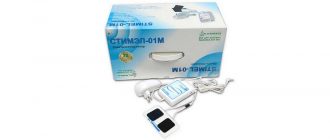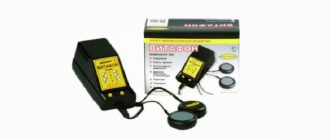Laser treatment of prostatitis can enhance the effectiveness of drug therapy and speed up the recovery of chronic forms of inflammation. This method of therapy has a number of advantages and is highly effective as an auxiliary procedure. The sessions are painless and take very little time.
The essence of the procedure
Laser physiotherapy for prostatitis and adenoma is not an independent method of treating pathology and is necessarily included in the therapeutic complex along with medication. In addition, the use of a laser is not necessary in every case. The fact is that in the first stages, for a complete cure, only taking medications is enough, and laser (and other physical procedures) are prescribed only to speed up treatment of the acute stage and in the chronic course of the disease.
Laser therapy for the prostate involves emitting a stream of light of a certain wavelength (in the red range) in a pulsed or continuous mode. The peculiarity of laser treatment is that the beam penetrates through the upper tissues, affecting the lower ones.
Depending on many factors (individual course of the disease, possible contraindications, physician’s discretion, etc.), prostate laser therapy can be performed in one of several ways:
- Acupuncture - the effect is exerted on certain points.
- External – the effect occurs on a large area of skin.
- Rectally - the laser is inserted through the rectum, into the area adjacent to the prostate. Used for advanced diseases.
In addition, prostate laser therapy can be combined with other methods of treatment:
- magnetic laser;
- vibromagnetolaser;
- electrolaser;
- hydrolaser
The effectiveness of laser treatment for prostatitis is ensured by the following effects:
- improving blood supply to the gland and reducing the likelihood of stagnation;
- increasing the efficiency of drug absorption;
- stimulation of regenerative processes;
- increased oxygen flow;
- stimulation of the immune system;
- anti-inflammatory;
- painkiller.
Among the main advantages are:
- the effect is directly on the affected tissue;
- small range of contraindications;
- practically incapable of causing complications;
- the ability to combine with other therapeutic methods;
- widespread and accessible.
Indications
Laser physiotherapy is prescribed in the following cases:
- For chronic bacterial or congestive prostatitis.
- When prostatitis is complicated by prostate adenoma.
- If necessary, enhance the therapeutic effect.
Contraindications
The procedure is contraindicated in the following cases:
- In acute form of prostatitis.
- In case of hematopoietic function disorders, severe diseases of the cardiovascular system, blood clotting disorders.
- For severe diseases of the respiratory system (including tuberculosis).
- In the presence of malignant neoplasms.
- For disorders of the nervous system.
Preparation and execution
Before prescribing laser procedures, you need to undergo general tests of blood, urine and prostate secretions; in addition, a blood test for PSA and a spermogram may be prescribed. The preparatory stage also includes filling the bladder an hour before the procedure.
Laser therapy for prostate adenoma and prostatitis is carried out according to the following method:
- the patient is placed in a special chair in a semi-lying position;
- the perineal area is smeared with a special gel that enhances the penetration of the laser into the tissue;
- the procedure lasts about 10 minutes;
- At the end, breathing exercises are performed.
The entire course of treatment is usually 8-10 procedures.



